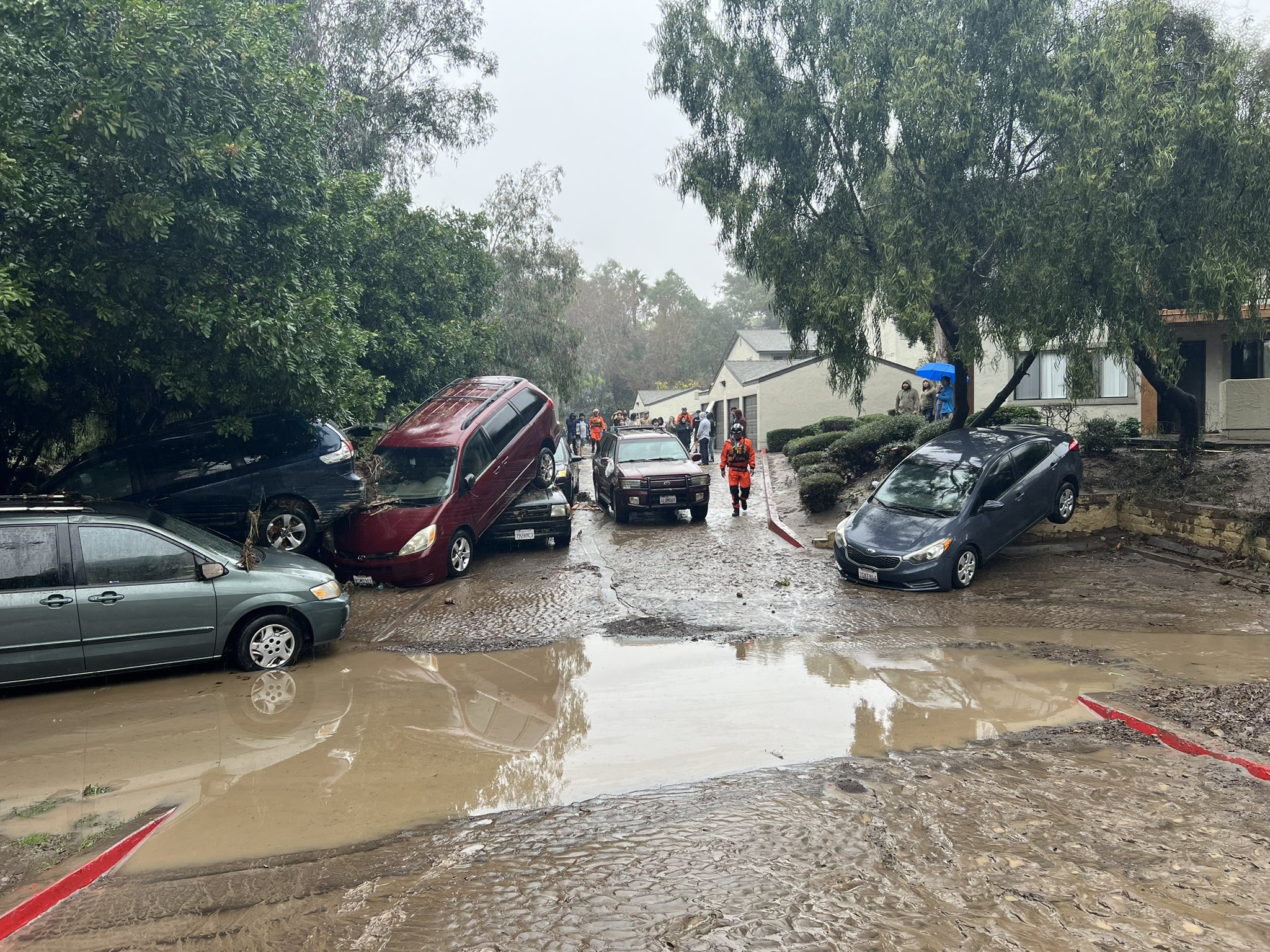What we’re watching: Weekly disaster update, January 29

We know all too well that disaster can strike anytime, anywhere in the world. Some disasters make headlines; others do not. Here at the Center for Disaster Philanthropy (CDP), we monitor the status of disasters worldwide and compile a list of the ones we’re tracking weekly, along with relevant disaster-related media coverage.
Here’s what we’re watching for the week of Jan. 29, 2024.
New or Emerging Disasters
Flooding – California: On Jan. 22, parts of San Diego received more rain in a matter of hours than the city typically gets all winter. Over three hours, 3 inches of rain fell at nearby National City, while 2 inches fell at San Diego International Airport.
The heavy rainfall and subsequent flash floods overtook streets, swept away cars and swelled riverbanks. The city’s fire department said it had rescued at least 24 people from the rushing San Diego and Tijuana rivers. On Jan. 23, California Governor Gavin Newsom proclaimed a state of emergency in San Diego and Ventura counties due to winter storms.
Landslide – China: A landslide in a remote, mountainous part of Yunnan province resulted in the death of at least 31 people, according to Chinese state media. The disaster occurred just before 6 a.m. local time on Jan. 22. Rescuers were forced to work under challenging conditions with snow, icy roads and freezing temperatures.
Dave Petley, Vice-Chancellor of the University of Hull, wrote in his blog, “The main failure appears to have entrained debris from the lower part of the slope.”
Water Crisis – Tennessee: Residents of Memphis, Tennessee, endured four days under a boil water notice between Jan. 19-22 due to broken water pipes caused by subfreezing temperatures. On Jan. 23, the boil-water advisory issued for Memphis Light Gas and Water customers was lifted.
The Memphis City Council distributed thousands of cases of bottled water, but people who can’t leave their homes have few options during a water outage. The water crisis demonstrated that many older adults, people with disabilities or those without access to a car face challenges accessing water. The Tennessee Emergency Management Agency said on Jan. 21 that 19 counties reported operational issues with their water utilities.
Previous/Ongoing Disasters
Flooding – Democratic Republic of Congo: Heavy rains in recent weeks have caused the Congo River to rise to its highest level since 1961. Flooding in the northwestern part of the country has damaged more than 47,000 homes, affected more than 304,000 families and killed at least 300. In densely populated Kinsasha, Reuters reported that some lifelong residents said they have never experienced a disaster event like this.
The country lacks a flood prevention plan, and weak infrastructure means many areas are vulnerable to flash floods. The Republic of Congo is also experiencing flooding events due to the overflowing of the Congo River, with more than 336,000 people affected.
Wildfire – Hawaii: On Jan. 27, officials said the last victim of the Maui wildfires has been identified, bringing the death toll to 100. About two-thirds of the victims who died in the fire were 60 or older.
Cleanup of the burn zone continues, but challenges remain, including the Army Corps of Engineers receiving permission from property owners, demonstrating the complexity of the recovery process months after a disaster. The material from the cleanup is being moved to a temporary landfill in Olowalu. However, residents are concerned about the site selection and potential long-term negative impacts on the ecosystem.
Funder Hui, Hawaiʻi’s first association of funders and philanthropy-serving organization, is hosting a briefing call on the Maui long-term recovery efforts on February 9. Recordings of past Maui fire briefing calls can be accessed on Funder Hui’s website.
For more, see our 2023 North American Wildfires disaster profile.
In addition to the disasters listed above, we actively monitor the following disasters or humanitarian emergencies. For more information, see the relevant disaster profiles, which are updated regularly.
- Afghanistan Humanitarian Crisis
- Horn of Africa Hunger Crisis
- 2024 Japan Earthquake
- 2023 Libya Floods
- 2023 Morocco Earthquake
- Palestinian-Israeli Humanitarian Crisis
- Sudan Humanitarian Crisis
- 2023 Turkey-Syria Earthquake
- 2024 U.S. Tornadoes
U.S. Midwest Low-Attention Disasters
The Midwest is regularly faced with low-attention disasters that affect people across the region. CDP’s Midwest Early Recovery Fund (ERF) effectively funds efforts that catalyze equitable disaster recovery.
These are some of the latest disasters and related news the ERF team is monitoring:
- On Jan. 13, the temperature was -24 degrees Fahrenheit or lower in parts of South Dakota. Local partners shared with the ERF team that the Cheyenne River Sioux Tribe in Eagle Butte lost four tribal members from the winter storm, 50 families were without water and 100 homes had storm-related damage from frozen water lines.
- The Hampton, Arkansas, community suffered significant damage from overnight storms on Jan. 12. The storms damaged some roofs, and some residents lost power temporarily.
- Helena-West Helena, Arkansas, is under a disaster declaration because thousands lack running water. City officials blame the outage on a problematic well. The National Guard was helping with water distribution.
Complex Humanitarian Emergencies – The Sahel Regional Crisis
Many places worldwide are experiencing emergencies caused by conflict, climate change, drought, famine, economic challenges and other conditions that combine to create a complex humanitarian emergency (CHE). CDP maintains complete profiles on several CHEs, and what CDP considers Level 1 CHEs are profiled in this weekly blog post and tracked.
The Sahel is a semi-arid region of western and north-central Africa and is one of the world’s most crisis-prone areas. The region experiences droughts, floods and land degradation that threaten livelihoods, and needs are exacerbated by armed conflict and violence. CDP includes the following countries as part of the Sahel Regional Crisis – Burkina Faso, Cameroon, Chad, Mali, Niger, Nigeria and Senegal.
In 2023, 35.2 million people needed humanitarian assistance, with 11.6 million experiencing food insecurity. As of Dec. 18, 2023, donors had funded only 36% of the $4.6 billion required to support 23.6 million people.
In Burkina Faso, Mali and Niger, the security situation continued to deteriorate in the last quarter of 2023, with 950 security incidents between October and November leading to more than 2,300 deaths. The violence increases the risk of food insecurity and often prevents humanitarians from reaching affected people.
According to the INFORM subnational risk model for the Sahel, large parts of Mali and Burkina Faso show very high levels of risk when considering overall risk, hazards and exposure, vulnerability and lack of coping capacity.
The conflict in Sudan has forced thousands to flee, with many arriving in neighboring Chad in search of safety and provision. The UN High Commissioner for Refugees estimates that the number of refugees and returnees could reach 910,000 in Chad by the end of 2024. Many of the people returning to Chad are in urgent need of food, water, sanitation and hygiene, shelter, household items, health, and protection.
Upcoming webinar
Feb. 8: Beyond breaking news: Local journalism’s role in disaster recovery

What We’re Reading
- FEMA Announces Significant Changes to Individual Assistance Program Urged by NLIHC’s Disaster Housing Recovery Coalition – National Low Income Housing Coalition: The statement from NLIHC states, “Reforms announced in the rule remove several barriers to assistance and expand the amount of repair and housing aid available for both lower-income renters and homeowners.” NLIHC will host a webinar on January 30; you can register here.
- GoFundMe Is Remaking Disaster Aid. It Largely Helps the Wealthy. – The New York Times: “Researchers examined donations to hundreds of people who lost their homes in the 2021 Marshall Fire in Colorado, which destroyed more than 1,000 dwellings near Boulder. They found that those with household incomes above $150,000 received 28 percent more money, on average, than those with incomes below $75,000.”
- Middle East thrust into ‘apocalyptic’ humanitarian crisis by war and turmoil – The Guardian: “Four overlapping crises – Gaza, Lebanon, Syria and Yemen – are putting unprecedented pressures on aid agencies. The humanitarian community is having to accept the stark reality that it can no longer meet demand.”
- IOM Chief: Nearly 100 Disappeared or Dead in Mediterranean in 2024 Underscoring Need for Regular Pathways – The International Organization for Migration: “The toll is over twice as high as the figure for the same period of 2023, the deadliest year for migrants at sea in Europe since 2016.”
- Empowering the Global South: Philanthropy’s Role in the Climate Crisis – Alliance: Pedro Hartung writes, “It is morally—and strategically—right for philanthropic voices from the Global South to take leadership roles as we prepare for COP 30 to come to the Amazon.”
Law enforcement in Indiana participated in a unique rescue on Jan. 27. After a truck carrying circus animals caught fire, five zebras, four camels and a miniature horse were successfully rescued.
